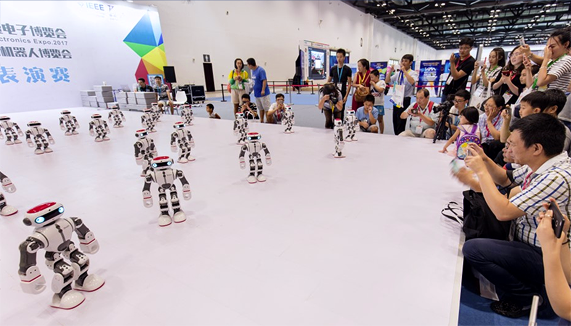October 21, 2019
James Johnson
The end of military-techno Pax Americana? Washington’s strategic responses to Chinese AI-enabled military technology

The following is an excerpt of an article published on Taylor & Francis Online.
This article uses the international relations (IR) ‘polarity’ concept as a lens to view the shifting great power dynamics in artificial intelligence (AI) and related enabling technologies. The article describes how and why great power competition is mounting in within several interrelated dual-use technological fields; why these innovations are considered by Washington to be strategically vital, and how (and to what end) the United States is responding to the perceived challenge posed by China to its technological hegemony. The following questions addressed in this paper fill a gap in the existing literature: Will the increasingly competitive U.S.-China relationship dominate world politics creating a new bipolar world order, as opposed to a multipolar one? Why does the U.S. view China’s progress in dual-use AI as a threat to its first-mover advantage? How might the U.S. respond to this perceived threat?
This article considers the intensity of U.S.-China strategic competition playing out within a broad range of artificial intelligence (AI) and AI-enabling technologies (e.g. machine learning, 5G networks, autonomy and robotics, quantum computing, and big data analytics).1 It describes how great power competition is mounting in intensity within several dual-use high-tech fields, why these innovations are considered by Washington to be strategically vital, and how (and to what end) the U.S. is responding to the perceived challenge posed by China to its technological hegemony. The article uses the International Relations (IR) concept of ‘polarity’ (the nature and distribution of power within the international system) as a lens to view the shifting great power dynamics in AI-related strategic technology (e.g. microchips, semiconductors, big-data analytics, and 5G data transmission networks).2
The article argues that the strategic competition playing out within a broad range of dual-use AI and AI-enabling technologies, will likely narrow the technological gap separating great military powers (notably the U.S. and China), and to a lesser extent, other technically advanced small-medium powers.3 The article builds on the growing body of literature that reinforces the perception in the U.S. that China’s pursuit of AI technologies will threaten the unassailable first-mover advantage that U.S. has in a range of dual-use – and military-specific – AI applications (Allen & Chan, 2017). Artificial intelligence and national security. Cambridge, MA: Belfer Centre for Science and International Affairs. Because of this perceived threat, Washington will likely consider even incremental progress by China through a military lens, and thus treat any progress as a national security threat.
What are the implications of U.S.-China defense innovation for the strategic balance and stability, in particular, efforts by the United States to sustain its first-mover advantages in advanced military technology? Why does the U.S. view China’s progress in dual-use AI as a threat to its first-mover advantage? How might the U.S. respond to this perceived threat? Will the increasingly competitive U.S.-China relationship dominate world politics creating a new bipolar world order, as opposed to a multipolar one? The article is an attempt to acquire greater insight into these questions, to better understand the shifting power dynamics and strategic competition in the development of AI-related and enabling technology, and the implications of these trends for strategic relations between great powers.
Read more at Taylor & Francis Online.
